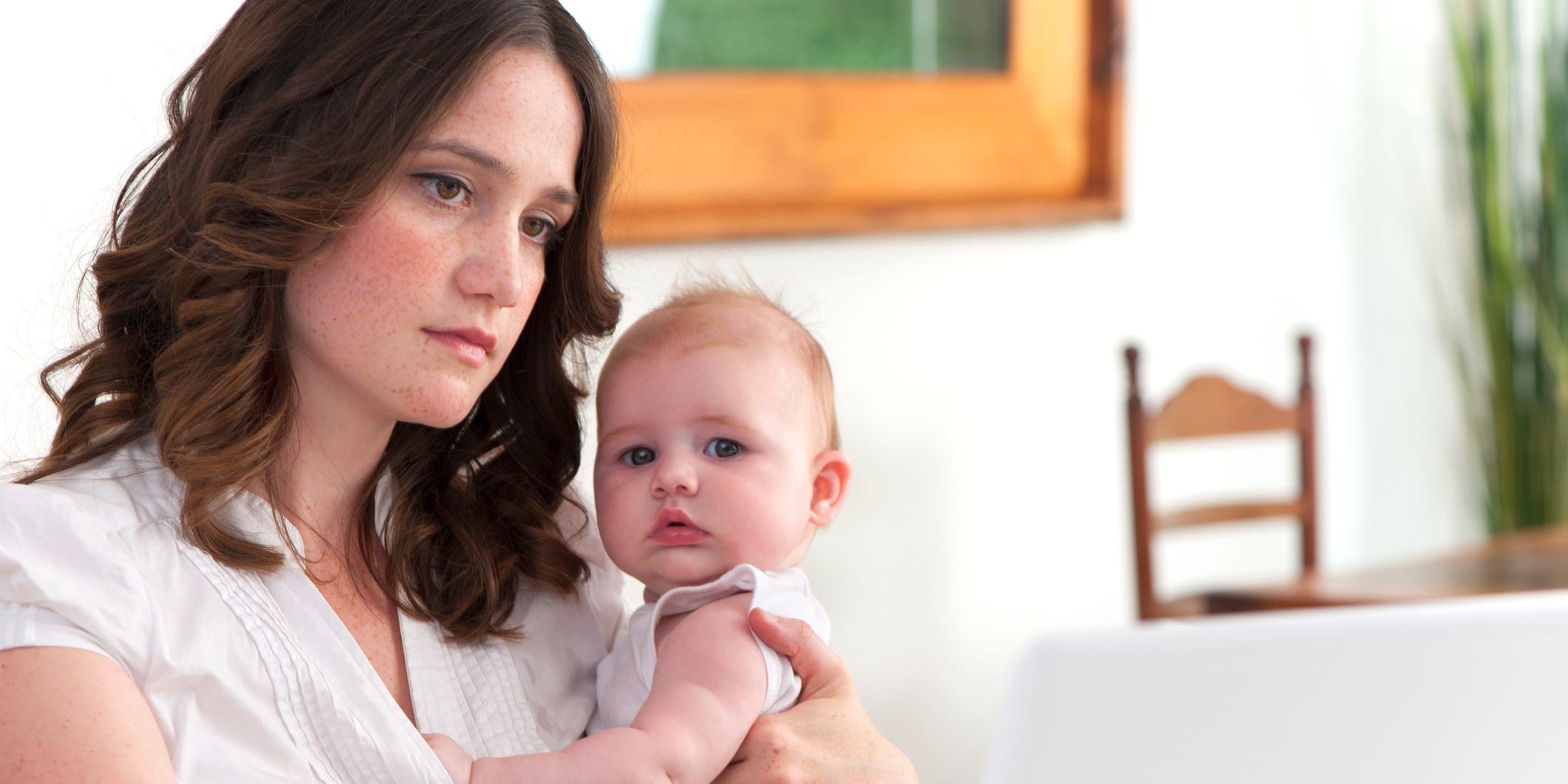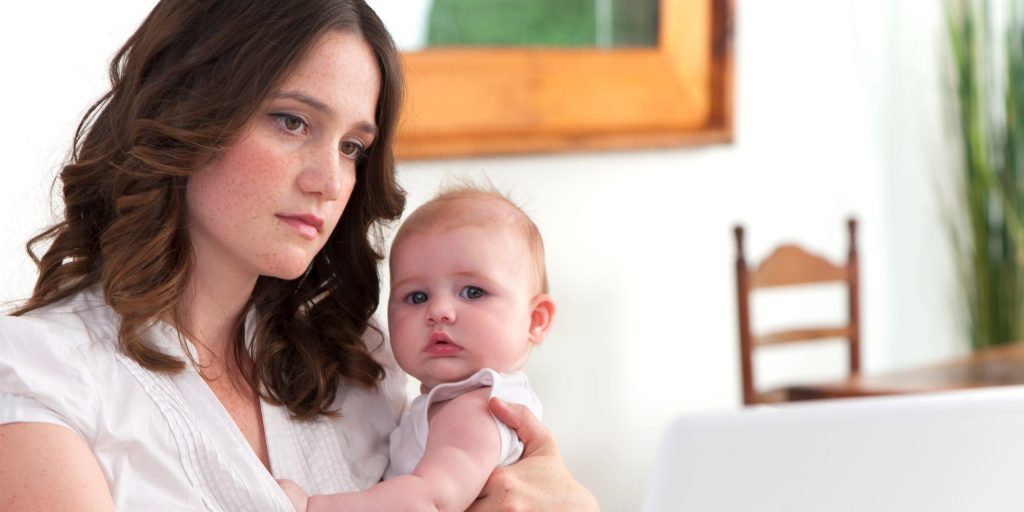
- Preeclampsia can also develop after childbirth and cause seizures and other health complications.
- Common symptoms include severe headache, blurry vision, and swelling in your face and limbs.
- Treatment for postpartum preeclampsia may involve IV or oral medication and a brief hospital stay.
- Visit Insider's Health Reference library for more advice.
Preeclampsia is a blood pressure condition that impacts about 5% to 8% of people during pregnancy. You might think you're no longer at risk after giving birth, but preeclampsia can still develop once your baby is born.
Postpartum preeclampsia may affect anywhere from less than 1% to nearly 28% of people after childbirth, experts believe, though research on this condition is limited compared with research on preeclampsia that occurs during pregnancy.
Symptoms
Postpartum preeclampsia often sets in during the first 48 hours after delivery, but you can develop it for up to six weeks after childbirth. A small 2019 study suggests postpartum preeclampsia may actually develop near the end of pregnancy but go unnoticed until after you give birth.
Symptoms of postpartum preeclampsia include:
- Severe headache
- Blurry vision or seeing spots
- Swelling in your arms, legs, or face
- Trouble breathing
- Abdominal pain
- Nausea and vomiting
Headaches are the most common symptom for people with postpartum preeclampsia, with one small 2011 study reporting that nearly 70% of people experienced them. But it's also possible to be asymptomatic — a small 2020 study found that just over 6% of people diagnosed with postpartum preeclampsia didn't notice any symptoms.
In a 2017 study, some new parents said that when they reported symptoms of preeclampsia after childbirth, medical staff assumed their symptoms related to general postpartum concerns. Some of the parents experienced medical complications as a result, which emphasizes the need for increased awareness of postpartum preeclampsia.
In short, it's unclear how often symptoms of this condition go unrecognized — but it's important to advocate for yourself when your symptoms concern you.
"If someone is being sent home, but they still don't feel right, they should insist on being seen by an OB-GYN directly," says Renita White, an OB-GYN at Georgia Obstetrics and Gynecology.
If you're worried you might be experiencing postpartum preeclampsia, you can also track your blood pressure by taking readings at home with your own blood pressure monitor.
Causes and risk factors
Experts don't know the exact causes of preeclampsia, but they propose that the placenta, the organ that provides nutrition and oxygen to the fetus during pregnancy, plays an important role.
Childbirth used to be considered the standard treatment for preeclampsia, but experts now recognize that preeclampsia can develop even after you've delivered your baby and the placenta.
As it turns out, the placenta's impacts on your body can linger even after the organ is gone. According to a small 2019 study, differences in the placenta before birth were connected to changes in the immune system that may have brought on symptoms of preeclampsia after the placenta was delivered.
Possible complications
Untreated preeclampsia can become life-threatening, so it's important to reach out for medical help if you notice any symptoms of the condition.
"Postpartum preeclampsia is a complex diagnosis that can have serious repercussions," says White.
Many of the complications associated with postpartum preeclampsia overlap with those associated with preeclampsia. Getting evaluation and treatment as soon as you recognize the signs can lower your chances of experiencing:
- Eclampsia. Preeclampsia can lead to eclampsia, which causes seizures and convulsions. About one in every five cases of eclampsia happen in the postpartum period.
- HELLP syndrome. HELLP — hemolysis, elevated liver enzymes, and low platelets — syndrome is a severe form of preeclampsia. Signs include abdominal pain and nausea. About 30% of HELLP syndrome cases happen after childbirth.
Meanwhile, research from 2011 suggests the following could be longer-term complications of preeclampsia:
- Diabetes
- Chronic hypertension, or high blood pressure
- Kidney disease
- Hypothyroidism
- Problems with memory
A large 2019 study also suggests that because of its connection to standard preeclampsia, postpartum preeclampsia could increase your risk for heart disease in the future — but taking steps to manage your blood pressure can help reduce these risks.
Diagnosis and treatment
Preeclampsia is diagnosed the same way whether you're currently pregnant or have already delivered your baby, says Jenn Conti, an OB-GYN and medical advisor for Modern Fertility.
Learning to recognize the key symptoms of preeclampsia noted above can help you get a prompt diagnosis. Checking your own blood pressure can also give you a good idea of when it's time to call your doctor or midwife.
A healthcare professional can diagnose preeclampsia during a postpartum checkup based on a high blood pressure reading, typically 140/90 mm Hg or above.
They may order blood and urine tests to confirm a postpartum preeclampsia diagnosis.
If you have postpartum preeclampsia, your doctor may want to observe symptoms more closely before you begin treatment, but they may recommend beginning treatment right away.
Treatment can involve:
- IV medication to lower your blood pressure. The first step of treatment is usually lowering and stabilizing your blood pressure. Your doctor might use medicines called antihyperintensive agents, such as hydralazine or labetalol, to do this, especially if your blood pressure is 160/110 mm Hg or higher.
- Oral medication. Once your blood pressure lowers to at least 140/90 mm Hg, you might take a prescription medication to help lower your blood pressure further and keep it level.
Some medicines you might receive for postpartum preeclampsia include:
- Magnesium sulfate, an anticonvulsant used to prevent and control seizures. Since seizures are a risk of preeclampsia, your doctor might use magnesium sulfate to reduce that risk.
- Diuretics, which promote urination. These medications may help lower your blood pressure by helping your body get rid of excess fluids.
Experiencing postpartum preeclampsia once can mean you have a higher risk of high blood pressure going forward. Your doctor might recommend monitoring your blood pressure at home to keep ahead of any symptoms before they become severe.
Prevention
Many of the approaches used to lower the risk of preeclampsia will also help lower your risk of postpartum preeclampsia.
Screening and consistent check-ups can help with prevention. "We now screen every pregnant person for preeclampsia at the start of pregnancy to see if they qualify for low dose daily aspirin beginning at 12 weeks gestation," says Conti.
The following could help reduce your chances of developing postpartum preeclampsia:
- Aspirin. If you're considered to be high risk, your doctor might recommend aspirin to help prevent preeclampsia.
- Lifestyle changes. Habits that help you maintain a healthy weight for you, such as eating nutritionally dense foods and getting regular exercise, could help lower your risk of developing preeclampsia.
- Hydration. Drinking enough water could help lower your risk of developing high blood pressure during and after pregnancy. The American College of Obstetricians and Gynecologists recommends drinking 64 to 96 ounces of water each day during pregnancy.
- Calcium. Taking calcium supplements during pregnancy may help lower your risk of preeclampsia.
You can do all these things and still develop preeclampsia — and that doesn't mean you did anything wrong. Many of the ways pregnancy impacts your body are out of your control.
Your doctor or midwife can offer more guidance on lowering your risk of postpartum preeclampsia, along with recommendations specific to your needs and situation.
Insider's takeaway
Knowing preeclampsia remains a possibility even after delivery can help you stay aware of the signs of this potentially life-threatening condition.
"It's scarier postpartum because people often think they're out of the woods and may not be screening for it, so it can go unnoticed for longer," says Conti.
If you've just had a baby and think you might have preeclampsia, call your OB-GYN or seek emergency care as soon as possible.
